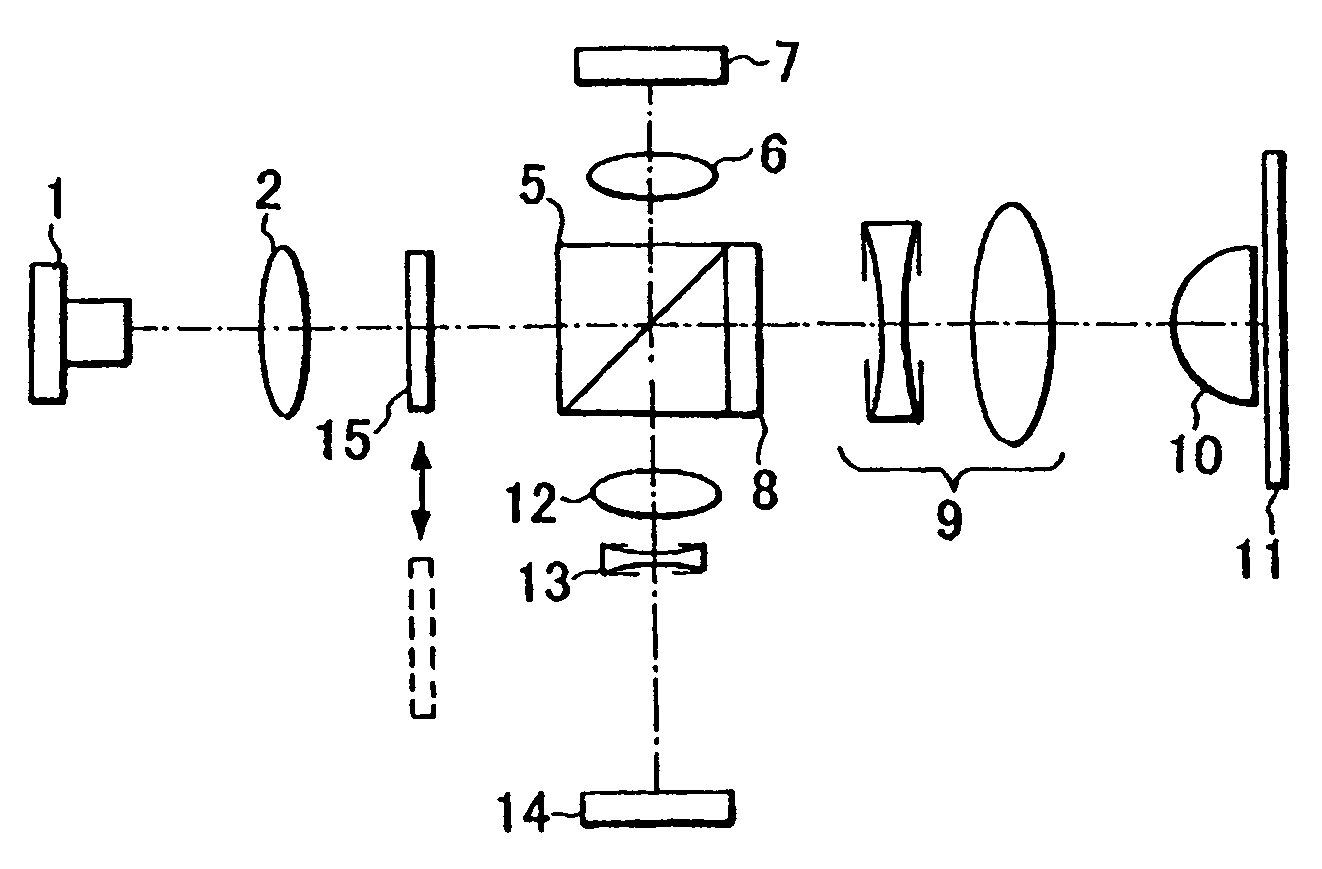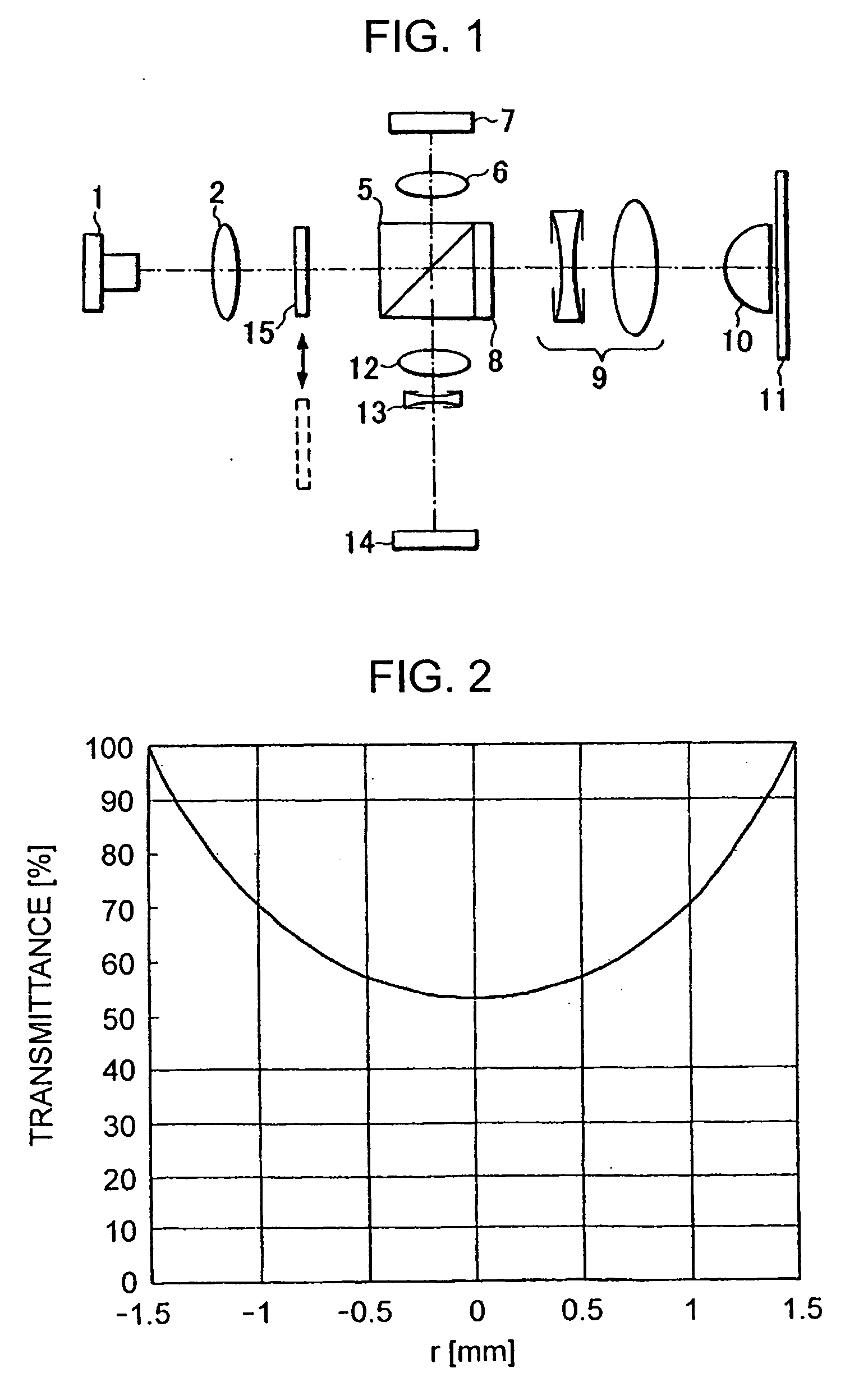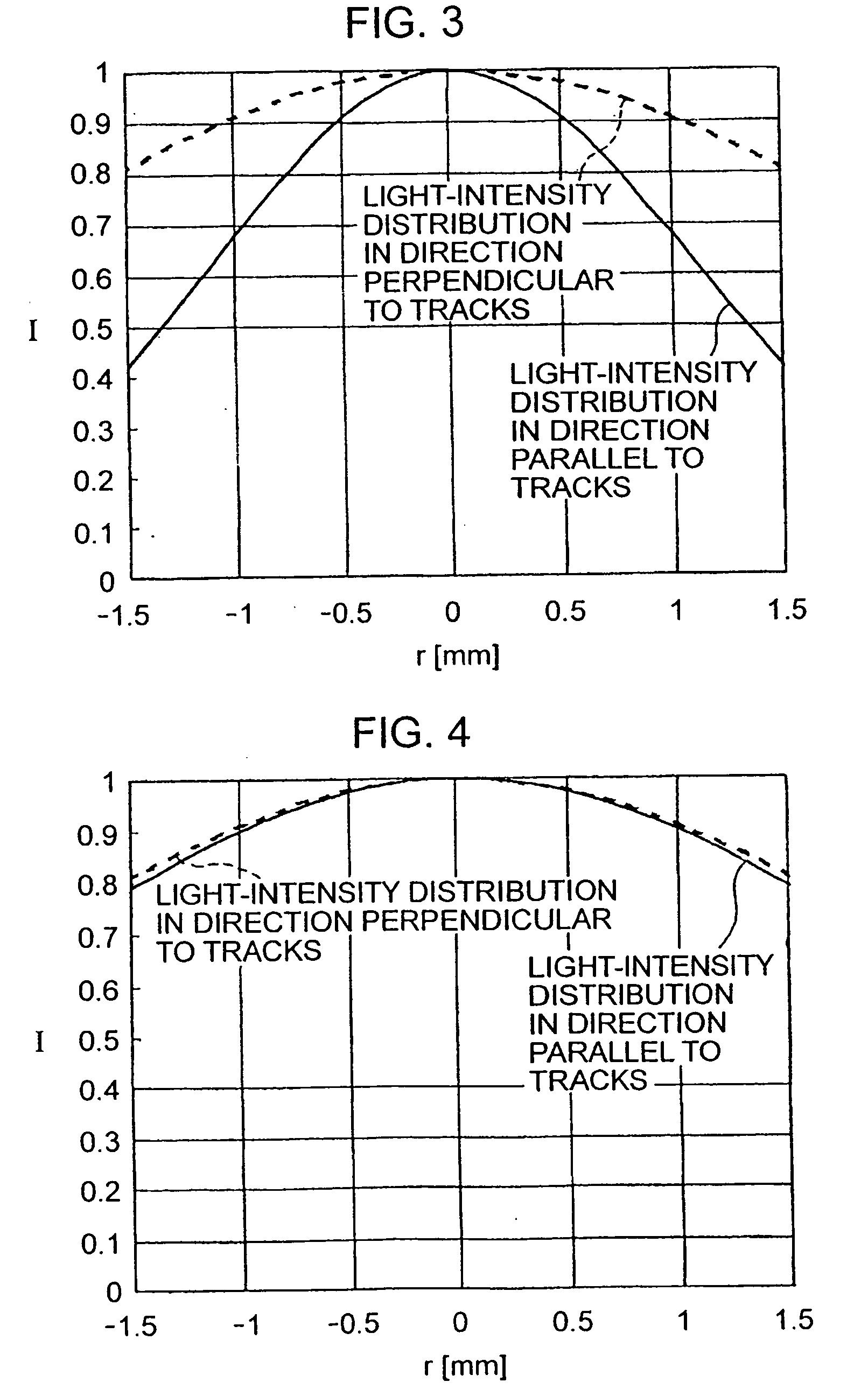Apparatus using light-attenuating element for optically reproducing and recording information
a technology of light-attenuating elements and optical reproduction, which is applied in the field of apparatuses for optically reproducing information, can solve the problems of unstable reproducing and recording, difficult to achieve sufficient signal-to-noise ratios of regenerative signals, and noisy blue lasers, and achieve stable reading-writing operations and simplified structure
- Summary
- Abstract
- Description
- Claims
- Application Information
AI Technical Summary
Benefits of technology
Problems solved by technology
Method used
Image
Examples
first embodiment
[0048]FIG. 1 illustrates an overview of an apparatus for optically reproducing and recording information according to a first embodiment of the present invention.
[0049] Divergent elliptical light beams emitted from a semiconductor laser 1 are collimated by a collimating lens 2, and enter a polarized-beam splitter 5.
[0050] Part of the incident beams is reflected, and is converged on a front-monitoring photodiode 7 by a monitoring lens 6.
[0051] The output of the semiconductor laser 1 is controlled on the basis of the output of this front-monitoring photodiode 7.
[0052] On the other hand, the light beams passing through the polarized-beam splitter 5 are converted into circularly polarized light beams by a quarter-wave plate 8, and the resultant beams enter a beam expander 9.
[0053] The beam expander 9 includes a combination of a concave lens and a convex lens. The concave lens is movable in the optical-axis direction so as to correct spherical aberration generated by an error in thi...
second embodiment
[0074]FIG. 5 illustrates an overview of an apparatus for optically reproducing and recording information according to a second embodiment of the present invention. Like reference numerals will be used to indicate elements similar to those in the first embodiment.
[0075] Divergent elliptical light beams emitted from a semiconductor laser 1 are collimated by a collimating lens 2, and enter a polarized-beam splitter 5.
[0076] Part of the incident beams is reflected, and is converged on a front-monitoring photodiode 7 by a monitoring lens 6.
[0077] The output of the semiconductor laser1 is controlled on the basis of the output of this front-monitoring photodiode 7.
[0078] On the other hand, the light beams passing through the polarized-beam splitter 5 are converted into circularly polarized light beams by a quarter-wave plate 8, and the resultant beams enter a beam expander 9.
[0079] The beam expander 9 includes a combination of a concave lens and a convex lens. The concave lens is mova...
third embodiment
[0104]FIG. 11 illustrates an overview of an apparatus for optically reproducing and recording information according to a third embodiment of the present invention. Like reference numerals will be used to indicate elements similar to those in the first and second embodiments.
[0105] Divergent elliptical light beams emitted from a semiconductor laser 1 are collimated by a collimating lens 2, and enter a polarized-beam splitter 5.
[0106] Part of the incident beams is reflected, and is converged on a front-monitoring photodiode 7 by a monitoring lens 6.
[0107] The output of the semiconductor laser 1 is controlled on the basis of the output of this front-monitoring photodiode 7.
[0108] On the other hand, the light beams passing through the polarized-beam splitter 5 are converted into circularly polarized light beams by a quarter-wave plate 8, and the resultant beams enter a beam expander 9.
[0109] The beam expander 9 includes a combination of a concave lens and a convex lens. The concave...
PUM
| Property | Measurement | Unit |
|---|---|---|
| wavelengths | aaaaa | aaaaa |
| powers | aaaaa | aaaaa |
| aspect ratio | aaaaa | aaaaa |
Abstract
Description
Claims
Application Information
 Login to View More
Login to View More - R&D
- Intellectual Property
- Life Sciences
- Materials
- Tech Scout
- Unparalleled Data Quality
- Higher Quality Content
- 60% Fewer Hallucinations
Browse by: Latest US Patents, China's latest patents, Technical Efficacy Thesaurus, Application Domain, Technology Topic, Popular Technical Reports.
© 2025 PatSnap. All rights reserved.Legal|Privacy policy|Modern Slavery Act Transparency Statement|Sitemap|About US| Contact US: help@patsnap.com



